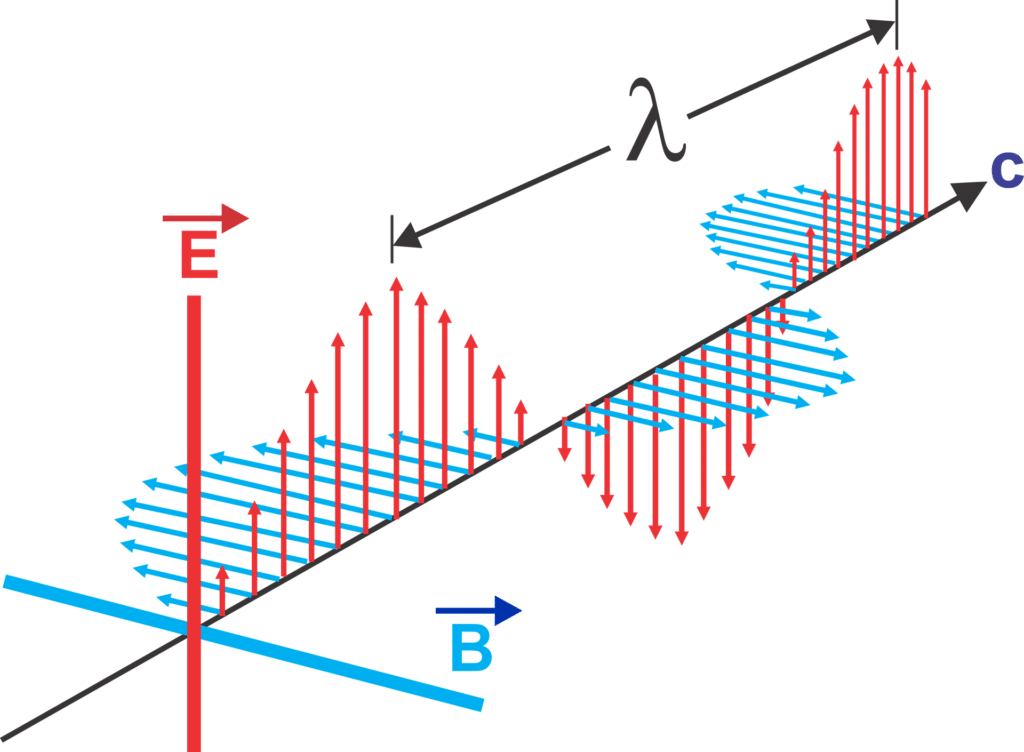
Light, one of the fundamental phenomena of the universe, has captivated the human imagination for centuries. From the flickering flames of ancient torches to the dazzling laser displays of the modern era, the nature of light has been a subject of intrigue and exploration. One of the most profound and enduring theories in the realm of optics is the Wave Theory of Light. This theory has not only revolutionized our understanding of light but has also played a pivotal role in shaping the foundations of modern physics. In this article, we will embark on a journey to uncover the principles and implications of this remarkable theory.
Table of Contents
ToggleA Historical Glimpse of the Wave Theory of Light
Before delving into this theory, it’s essential to acknowledge the historical context from which it emerged. For centuries, the prevailing belief was that light was composed of tiny particles called corpuscles. This particle theory of light, championed by scientists like Sir Isaac Newton, explained many optical phenomena but failed to account for some critical observations, such as the behavior of light during interference and diffraction experiments.
The Wave Theory of Light began to gain traction in the early 19th century, thanks in large part to the pioneering work of Augustin-Jean Fresnel and Thomas Young. Young’s famous double-slit experiment, conducted in 1801, provided compelling evidence that light exhibited wave-like behavior. This experiment involved shining light through two closely spaced slits and observing the resulting interference pattern on a screen behind them. The pattern could only be explained if light waves were interfering with each other, lending strong support to the wave theory.

Light as an electromagnetic wave
The Wave Theory of Light posits that light propagates as electromagnetic waves, with electric and magnetic fields oscillating perpendicular to each other and to the direction of propagation. These waves move through space at the speed of light, roughly 186,282 miles per second (299,792,458 meters per second), and they can interact with matter in various ways.
One of the most fascinating aspects of light waves is their ability to exhibit interference and diffraction patterns. When two or more coherent light waves (waves with the same frequency and phase) overlap, they can reinforce or cancel each other out, creating intricate patterns of bright and dark regions. This phenomenon has profound implications for our understanding of light and is exploited in various technologies, from optical coatings to holography.

E-electric field
B-magnetic field
λ=wavelength
C-direction of wave propagation
Applications and Implications of the wave theory of light
It has far-reaching implications in many scientific disciplines, including optics, astronomy, and quantum mechanics. Some notable applications and consequences include:
Optics
The theory underpins the design of optical instruments like microscopes, telescopes, and cameras. It also explains phenomena such as the dispersion of light, where different wavelengths of light are separated by a prism to form a spectrum.
Astronomy
The wave theory allows astronomers to analyze the light emitted or absorbed by celestial objects. Spectroscopy, for instance, relies on the dispersion of light to study the composition and properties of distant stars and galaxies.
Quantum Mechanics
In the early 20th century, quantum mechanics emerged as a groundbreaking theory that revolutionized our understanding of the microscopic world. The wave-particle duality of light, where it exhibits both wave-like and particle-like behavior, is a fundamental concept in quantum physics.
Lasers
The theory paved the way for the development of lasers (Light Amplification by Stimulated Emission of Radiation), which have a wide range of applications, from telecommunications to medical surgery.
Conclusion
From unraveling the mysteries of interference patterns to enabling cutting-edge technologies, the theory has left an indelible mark on our understanding of light and the universe. As we continue to probe the depths of the cosmos and the quantum world, the wave theory remains a guiding light, illuminating the path towards further discoveries and insights.

















